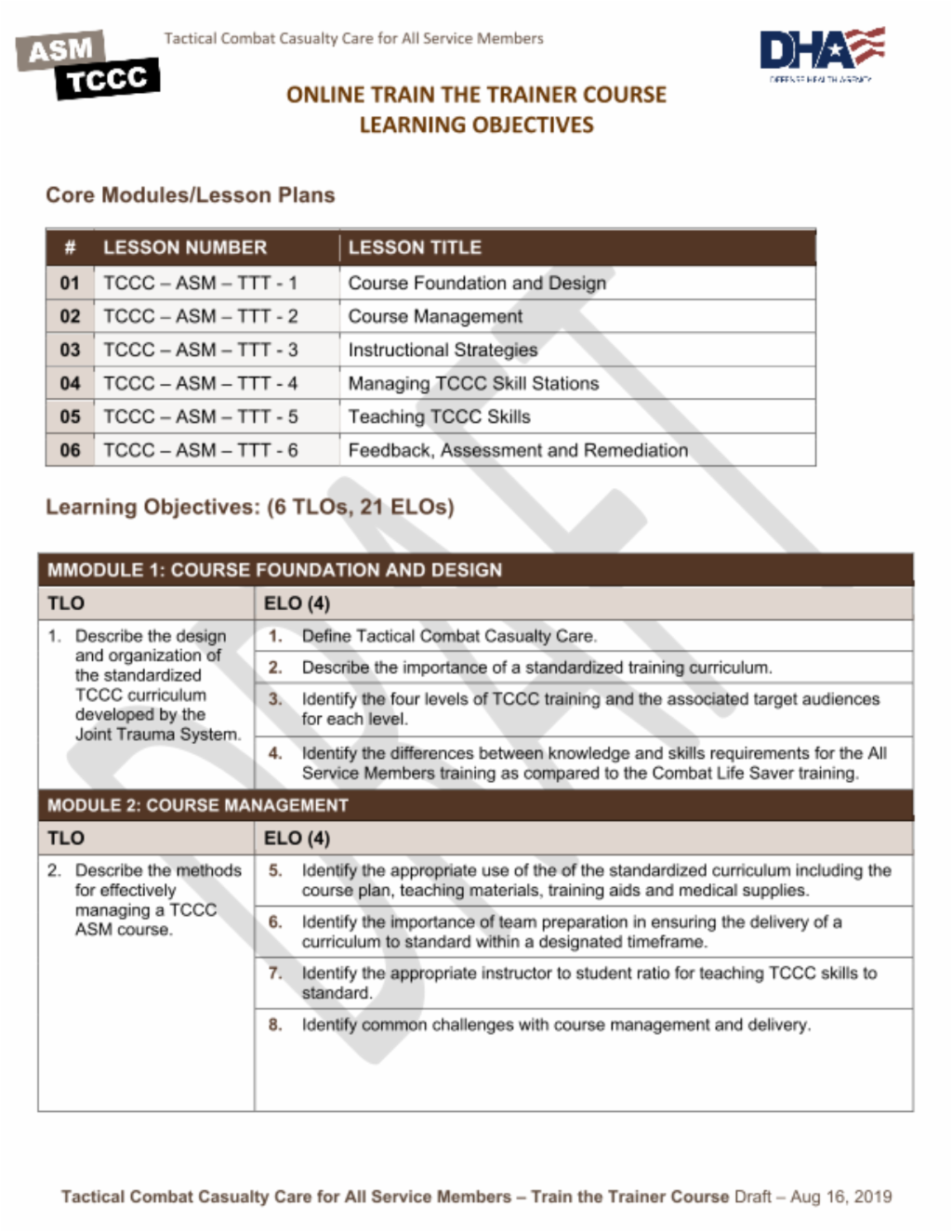All Service Members Train the Trainer
Joint Trauma System
MODULE 1: COURSE FOUNDATION AND DESIGN
ELO 1: Define Tactical Combat Casualty Care.
ELO 2: Describe the importance of a standardized training curriculum.
ELO 3: Identify the four levels of TCCC training and the associated target audiences for each level.
ELO 4: Identify the differences between knowledge and skills requirements for the All Service Members training as compared to the Combat Life Saver training.
MODULE 2: COURSE MANAGEMENT
ELO 5: Identify the appropriate use of the of the standardized curriculum including the course plan, teaching materials, training aids and medical supplies.
ELO 6: Identify the importance of team preparation in ensuring the delivery of a curriculum to standard within a designated timeframe.
ELO 7: Identify the appropriate instructor to student ratio for teaching TCCC skills to standard.
ELO 8: Identify common challenges with course management and delivery.
MODULE 3: INSTRUCTIONAL STRATEGIES
ELO 9: Identify methods for adapting instructional and assessment techniques for the target audience.
ELO 10: Identify strategies recommended for trainers that are TCCC instructors or have medical backgrounds to teach the standardized curriculum at a basic proficiency level to the novice learner.
ELO 11: Identify communication strategies that provide reassurance and build learner self-confidence in performing TCCC lifesaving skills.
MODULE 4: MANAGING TCCC SKILL STATIONS
ELO 12: Identify strategies used to organize and effectively facilitate a small group skills station.
ELO 13: Identify the appropriate approaches and instructional process for skills training while implementing time management strategies.
MODULE 5: TEACHING TCCC SKILLS
ELO 14: Identify the correct methodology and steps for teaching a rapid casualty assessment utilizing the MARCH protocol and best practices tailored for novice learners.
ELO 15: Identify the correct methodology and steps for teaching bleeding control including: tourniquet application, wound packing with a hemostatic dressing, and pressure bandaging using best practices tailored for the novice learner.
ELO 16: Identify the correct methodology and steps for teaching airway maneuvers using best practices tailored for the novice learner.
ELO 17: Identify the importance of repetition in achieving skills proficiency.
ELO 18: Identity common errors made by novice learners while performing TCCC skills.
MODULE 6: FEEDBACK, ASSESSMENT AND REMEDIATION TECHNIQUES
ELO 19: Identify the proper techniques for correcting errors that deviate from the approved skills procedures throughout the learning phase.
ELO 20: Identify the procedure utilized to assess novice learners using the TCCC-ASM Skills Checklist.
ELO 21: Identify effective remediation techniques.
